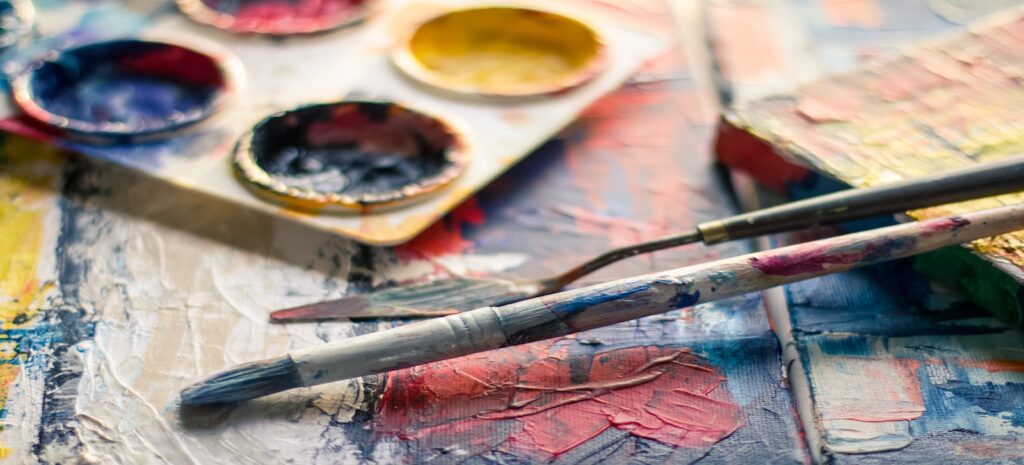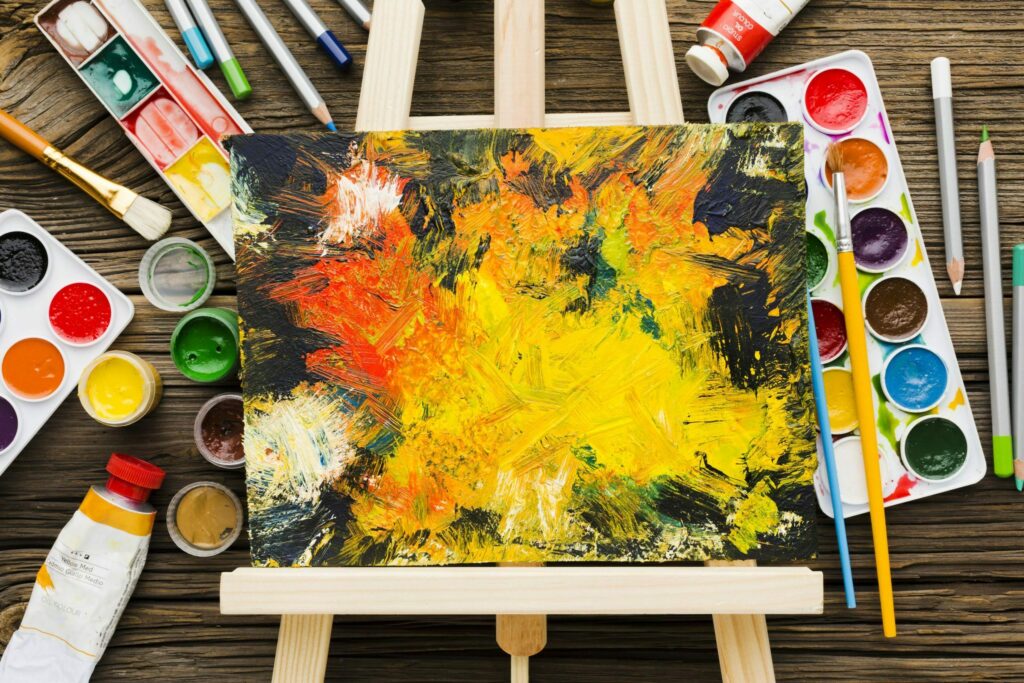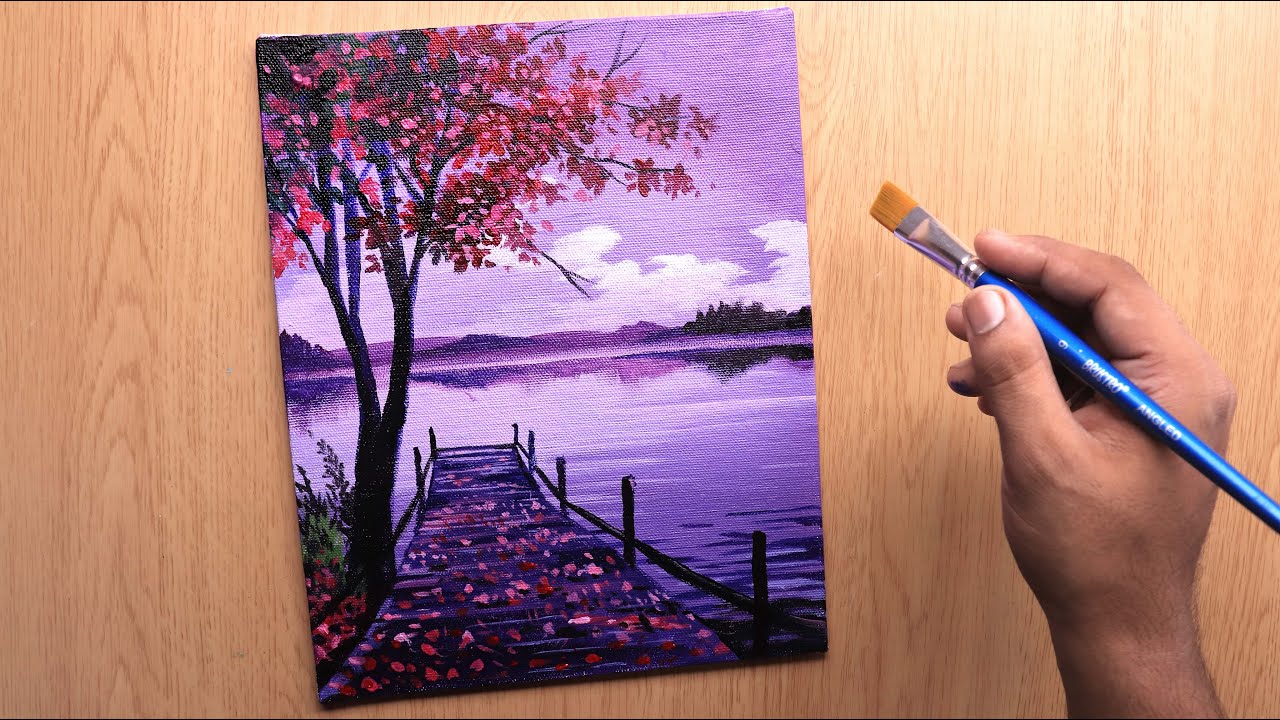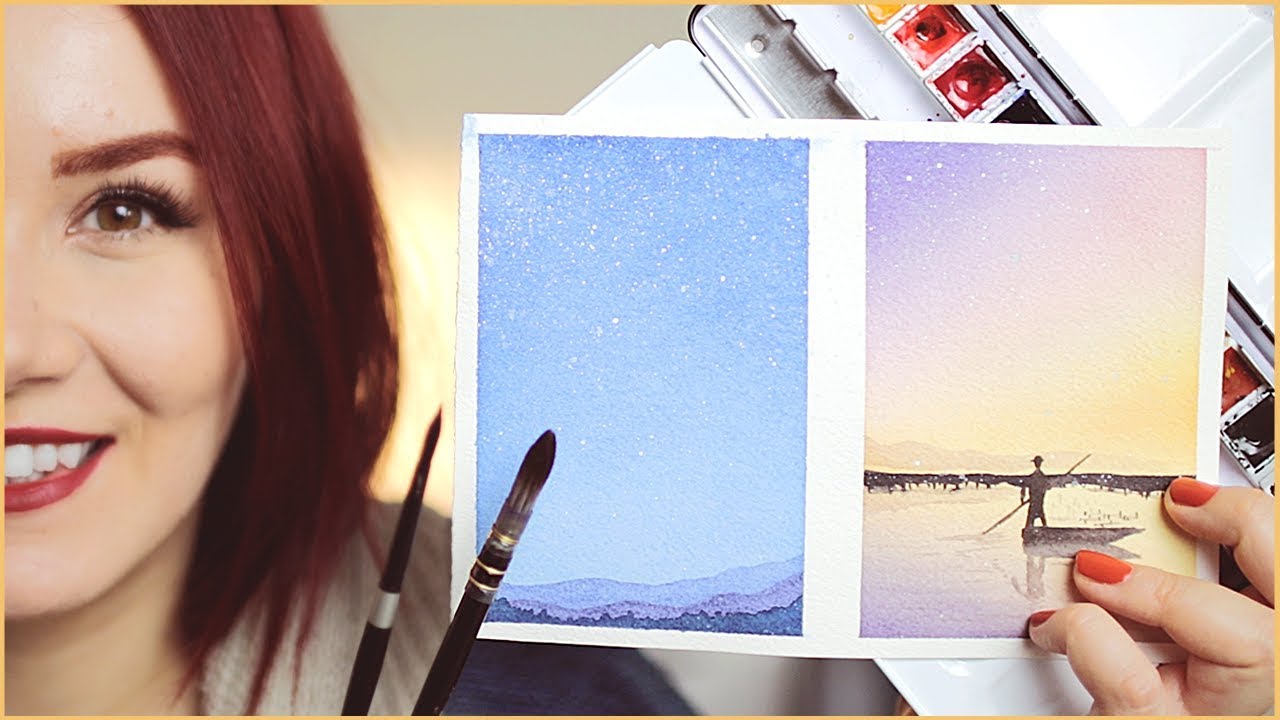Do you dampen the brush before to painting with acrylic paint?
Consider adding texture and complexity to the painting using a dry brush. When a dried brush is moved over the surface of a painting, it skips somewhat. This imparts a gritty aspect to the paint, which is great for areas where texture or detail are desired.
For instance, you may use a dry brush to mimic grass on the ground in your painting.
If you’re dry brushing, be sure to thoroughly wipe the brush dry between colors.
What is the proper way to thin acrylic paint?
Add water to the colour to make it more translucent. When applied immediately from the tube, acrylic paint set may seem thick and impenetrable. Add extra water to the paint on your palette to increase its opacity. To make the paint more transparent, add more water.
Never add more than around 20% water to acrylic paint when mixing it with water. If you apply more than that, the binding agent that keeps the paint adhered to the surface may degrade, resulting in the paint flaking off when it dries.
Acrylic paint may be diluted with glaze or paste to change their texture. If you use just straight acrylic paint on a canvas, the whole piece will have a monotonous, uniform effect. The visual texture is altered by diluting the acrylics with mix-ins. As a result, while the acrylic is being thinned, include other media such as glaze or texture paste. In general, diluted acrylic paint dry with a liquid, watery look.
- Glazes provide a satiny shine and a dazzling, glossy texture to the cured paint. • Texture pastes impart a rough, chunky texture to the paint, but may dilute the color somewhat after drying.
- Avoid using more than around 30% of your chosen medium, since this will result in the paint not covering the canvas’s surface.
On a canvas, how are acrylic paint blended?
Paint a line in one color, then another, merging in between using your brush. Arrange the two lines such that they are parallel to one another. Then, using your brush, make your way up and down the lines. This generates a smooth gradient, giving the illusion of the colors being combined.
The most seamless transition will occur if you keep both colors wet while working. If you like a more textured finish, apply the darker color first and allow it to dry before brushing on the lighter color.
Acrylic paint: can they be layered?
Yes, use layers to give texture and depth to your work. When working with acrylic paint, it is advisable to work in layers. This helps you to build depth, for example, by creating shadows and highlights in a tree using a variety of green hues. Allow enough time for each coat of paint to set fully before applying another coating. While small layers take around 30 minutes to dry, thick ones take well over an hour.
Begin with dark tones and broad forms then gradually go to brilliant hues and detail. Begin by sketching down your outlines, primary shapes, and any dark areas before you begin painting. Utilize the palette’s deepest tones. Then, as you add more layers, gradually brighten the colors to provide detail, texture, and highlights.
Acrylic paint does not mix until it has set. If you begin with the lightest colors and work your way darker, the darker colors will just cover the lighter ones—they will not get lighter. This is a general rule—if you apply an excessive amount of highlight, you may need to go back in with a darker color and fill in certain details. That is completely OK!
If you’re used to painting with watercolors, you’ll notice that this is the polar opposite of the traditional method of beginning with the lightest hue and working your way to the darkest.

How do you make texture using acrylic paint?
Splatter paint with a wet brush to create big regions of color. Coat a paintbrush or toothbrush’s bristles with water and then with paint. Grasp the brush firmly with one hand and strike it just below the bristles with the other. As the paint falls off in large clots, it will clump and attach to the canvas.
- Splattering is a wonderful technique for abstract art. Alternatively, play with splattering to give your painting more texture.
- •Hold the brush around 2–3 in (5.1–7.6 cm) from the canvas to regulate the spatter area. Additionally, you may use masking tape to cover any areas that you do not want to get wet.
Stipple the canvas with dots of paint. Stipple involves covering the bristles of a paintbrush with paint and tapping the tip of the brush softly on the canvas to create a feathery, spotty appearance. This method is perfect for painting birds or animals, or for imparting a feathery texture to an abstract work.
Never stipple when moving the brushes over the canvas. This will smear the stipples together and destroy the effect’s intent. Additionally, you may use a sponge dipped in paint and lightly dabbed on the canvas to create a bubbly effect.

How can you paint precisely straight lines using acrylics?
To create sharp edges, apply a strip of masking tape to the canvas. Masking tape may be used in the same manner as painters use painter’s tape to define the edge of a ceiling, for example. Without damaging the canvas or dried paint, masking tape may be placed directly on it. Simply firmly press the tape to ensure that no paint seeps under its surface. After painting the hard edge, pull away the masking tape gently to reveal your perfectly straight line.
This technique is perfect for emphasizing a mountain’s sharp edges or the clean lines of a building. Click here for the best way to preserve your acrylic paint brush.
How can acrylic paint be removed from a palette properly?
Allow used paint to thoroughly dry before discarding them. Avoid washing your color palette in the sink, as the acrylic paint may clog the pipes. Alternatively, use a plastic tray as a color palette and allow any residual paint to dry completely after use. Then, after the paint has completely dried, remove it off the pan.
Alternatively, you might just paint over the dried colors with fresh, wet paint. While it is preferable to use the same color as the dried paint—colors will not mix after the paint has dried—if you layer many colors over the dried acrylic paint, it may be difficult to determine which color you are using. If the acrylic paint is still somewhat wet, a damp paper towel may be used to remove them off the palette.




